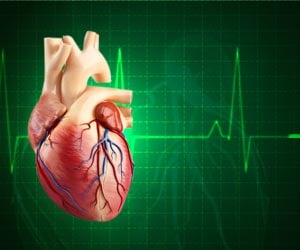People who exercise for even a few hours each week can enlarge their hearts, suggested a new study.

‘Healthy adults who exercise regularly may develop enlarged hearts. As a result, there's a risk that they could be misdiagnosed with heart disease.’





Scientists have not previously known the extent to which the hearts of healthy people adapt to the demands of moderate exercise. Over 1000 people took part in this study, making it one of the largest of its kind. Participants selected one of four possible categories that best represented their activity level over the past year, according to how many hours of exercise they did each week. Around one third of participants reported doing three to five hours of exercise, and the scientists found that one in five of these people had developed an enlarged heart as a result. Similar adaptations were seen in almost half of those who reported doing more than five hours of exercise. The findings suggest that above a threshold of three hours, the more exercise you do, the more your heart is likely to adapt, and the more the exercise, the more pronounced the changes. "Going to the gym frequently increases the thickness of your heart muscle and the volume of your heart chambers, particularly the right ventricle. It's a completely normal, healthy response. It shouldn't be misdiagnosed as being heart disease," says O'Regan.
These adaptations allow the heart to pump more blood, which helps to supply exercising muscles with the oxygen and nutrients they need. Changes to the heart's thickness and volume happen in tandem, and this distinguishes them from the changes seen in disease, which occur in isolation.
Today, doctors across the world use a standard of set values to see if the thickness and volume of a person's heart fall into the healthy or abnormal range. This helps to ensure consistency between different hospitals. According to O'Regan, the data that underpins these ranges comes from a relatively small study with people who were mainly sedentary. He says, "In this latest study, we looked at a much larger and broader group of people. We found that more people reported being active than had done in previous studies. Our recommendations reflect this growing participation in exercise."
Updating the ranges to account for activity should be straightforward. Indeed, doctors already account for an individual's height, age and gender, factors which are known to change the shape and structure of a person's heart. Just like these factors, a person's activity level could be established easily and quickly in the clinic.
Advertisement
At the beginning of the study, O'Regan and his colleagues, Stuart Cook and Timothy Dawes, both of the CSC, analyzed the genes of participants to rule out those with a family history and predisposition to heart disease. This allowed them to be confident that all of the eventual participants did indeed have healthy hearts, and any changes in their heart structure were the result of exercise.
Advertisement
"Detectable changes to the heart on an MRI scan are common in elite endurance athletes but some heart conditions, like cardiomyopathy, can be diagnosed by detecting similar changes. This study demonstrates the importance of documenting the MRI appearance of healthy, active people's hearts so normal adaptive changes are recognized by doctors and not mistaken for disease."
Source-Newswise














